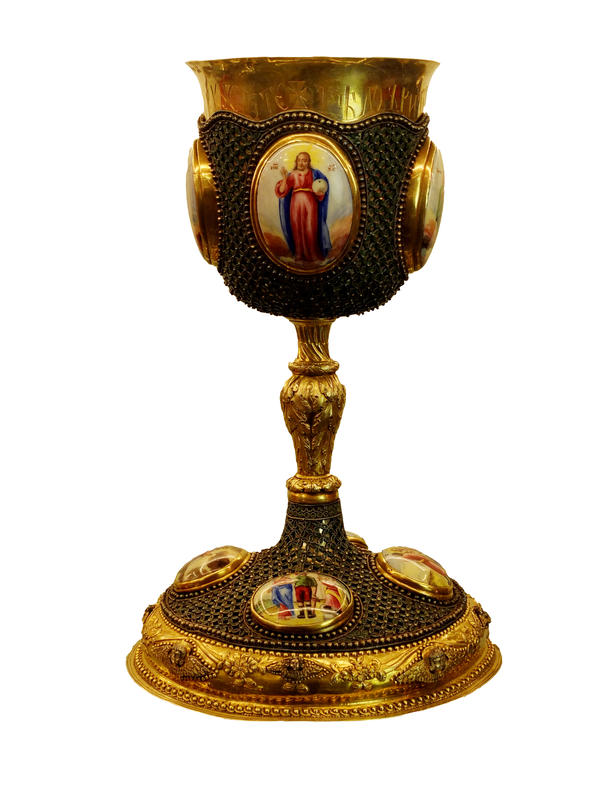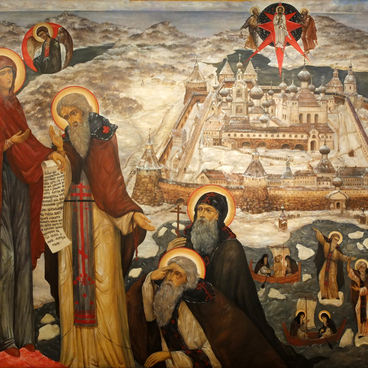Chalice — a bowl or cup from which the clergy and parishioners drink sacred wine during the sacrament of the Eucharist. Wine serves as the embodiment of Christ’s blood whereas the chalice itself symbolizes the bowl from which Jesus and twelve Apostles drank during the Last Supper. In early Christian time the cups were made from wood while in the 3rd century the first glass cups came into being and in the 4th century the lavishly decorated gold and silver bowls won popularity.
The chalice on display in the gallery was produced in 1786 by Moscow silversmith Fedor Petrov. By that time, he excelled in his work to reach the rank of alderman, a master in high-quality “silver art”. This is testified by his personal stamp F. P. on the chalice bottom plate. There are more signs on the same spot: by unknown alderman A. O/B, the Moscow city label bearing the year of make and the assay master brand A. T — he was supposed to supervise the right proportion of metals in the alloy. Mandatory state labels on silver items were introduced in Russia in 1711. During the same period as the position of alderman came into being, the latter could imprint his personal label on the product only in case “…the item that has been manufactured appears in good mastership”.
The chalice on display in the gallery was produced in 1786 by Moscow silversmith Fedor Petrov. By that time, he excelled in his work to reach the rank of alderman, a master in high-quality “silver art”. This is testified by his personal stamp F. P. on the chalice bottom plate. There are more signs on the same spot: by unknown alderman A. O/B, the Moscow city label bearing the year of make and the assay master brand A. T — he was supposed to supervise the right proportion of metals in the alloy. Mandatory state labels on silver items were introduced in Russia in 1711. During the same period as the position of alderman came into being, the latter could imprint his personal label on the product only in case “…the item that has been manufactured appears in good mastership”.



